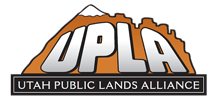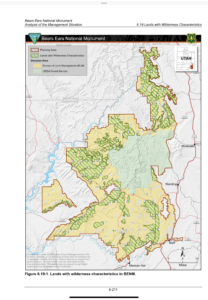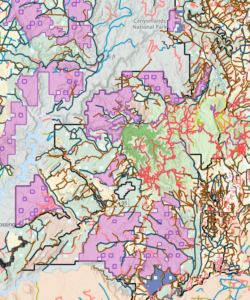How to Protect OHV in Bears Ears National Monument
The Bears Ears National Monument (BENM) was restored in size by President Joe Biden to 1,360,000 acres, making it one of the largest in the country. As a result, a new management plan is being developed that will decide how the land will be managed (used). The Scoping Document BLM prepared will be one of the largest eliminations of OHV use I’ve ever seen. Some of the most popular OHV routes would be Arch Canyon, Hotel Rock, Lockhart Basin, Beef Basin, Bridger Jack Mesa, Lavender Canyon, and Davis Canyon, with many, many more subject to the axe.
And it won’t just affect OHV use, if you are a hiker, dispersed camper, miner, drone pilot, or equestrian user that depends on access roads to get to your favorite sites, you will also be extremely limited on your use of the BENM under the current proposals.
BENM is a huge area with very diverse uses and landscapes,and is surrounded by other currently protected areas including National Parks, Wilderness, Wilderness Study Areas, and even another National Monument already contained in its massive boundaries. BLM’s scoping document should make the alternatives easier to understand, but this one makes it even more complex. NEPA requires that BLM and USFS consider a reasonable range of alternatives in their plans. OHV use is already limited in the entire BENM, meaning that you may only operate on designated routes. In addition, OHV use is already prohibited in Designated Wilderness (DW), Wilderness Study Areas (WSA), and Inventoried Roadless Areas (IRA),
Alternative A is the No Change required alternative. It is generally provided as a requirement to the “full range of options” legal requirement. It is always included as an obligatory placeholder,and is almost never selected in the final draft. Target shooting and drone operation would be permitted with some restrictions under this Alternative.
Alternative B adds Lands with Wilderness Characteristics to closure by OHV, as evidenced by the following chart which indicates how much of BENM will be closed to OHV. The BLM website states that for an area to qualify as lands with wilderness characteristics, it must possess sufficient size, naturalness, and outstanding opportunities for either solitude or primitive and unconfined recreation. It may also possess supplemental values.
The addition of “lands with wilderness characteristics” is an enormous tract of land depicted in the green hashed marks that will affect much of the 1800 miles of OHV routes, as well as many connecting routes between areas that will be cutoff from motorized vehicles. In addition, other special use restrictions such as limits on group sizes and permits will be required. In addition, target shooting and drone would be prohibited throughout the entire BENM.
Alternative C will probably be considered as the “balanced” approach, but it is definitely not for OHV and many other forms of recreation. It would divide the BENM into many different Recreation Opportunity Spectrum (ROS) zones, which all will have different limits and regulations on use. The language regarding this is not only vague, but contradictory in nature. It also includes “lands with wilderness characteristics” as being Closed to OHV. The language regarding road density and sitage is extremely vague, but their intent seems clear.This Alternative would allow some limited drone use and target shooting could be done in the “front country” or in designated ROS zones.
Alternative D is Orwellian in scope, adding to the “lands with wilderness characteristics” 3 additional restrictions with no formal definitions.
- 1) Areas where OHV use has damaged or is a current or foreseeable future risk to the protection, restoration, and resiliency of BENM objects and values. If the authors of this proposal are the unelected bureaucrats deciding this, we are in trouble.
- 2) Areas where OHV use affects traditional use and cultural setting
- 3)With the exception of existing designated routes, areas within 300 feet of riparian habitat, perennial springs, and other perennial aquatic ecosystems
Another statement in Alternative D is that “in OHV limited areas, road density would be minimized, and siting criteria would be identified, especially in important resource areas, to ensure the protection, restoration, and/or increased resiliency of BENM objects and values. Future implementation-level travel planning would not allow designation of additional routes but would focus on refining (as needed) the existing designated route network.” Target shooting and drone usage would be prohibited throughout the BENM. In Alternative D, your visit to Bears Ears may very well be limited to driving through in your passenger car with no dispersed camping opportunities, and complex rules that will almost ensure users will be in violation of one of them.
This map shows the complex network of designated areas, along with trails and roads overlaid onto it,
clicking here will display the map in greater detail. . Virtually all of the color shaded areas on this map will be restricted from OHV use.
There is no good alternative from this range of choices, so the best approach at this point is just to tell them you protest the array of current Alternatives, to complain about the lack of clarity on their entire RMP, and to comment on how you have used the area in the past, or plan to use it in the future. Some of the things you might mention are:
- How long and how often you’ve been coming here
- Who you have brought to visit the area
- Activities you’ve engaged in, OHV, Dispersed camping, hiking, equestrian
- The nature of any conservation efforts you have engaged in, whether it is in BENM or other public lands
- Specific trails that you enjoy, or plan to enjoy. Specific trails identified now are Arch Canyon, Hotel Rock, Lavender and Davis Canyons, Chicken Corners, Lockhart and Beef Basin, and the Peavine Corridor.
- If you have mobility or disability issues that limit your visitation
Comments are only being accepted until October 31, so please Visit Blue Ribbon Coalition’s website and complete their comment writer.
if you want to send personal comments about trails you use, submit them on the BLM E-Planning website.










